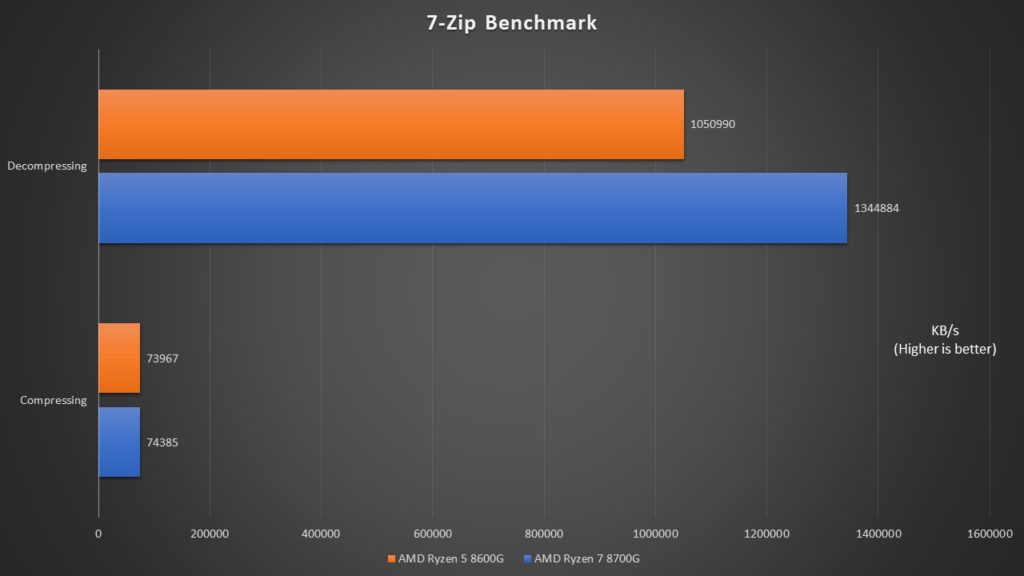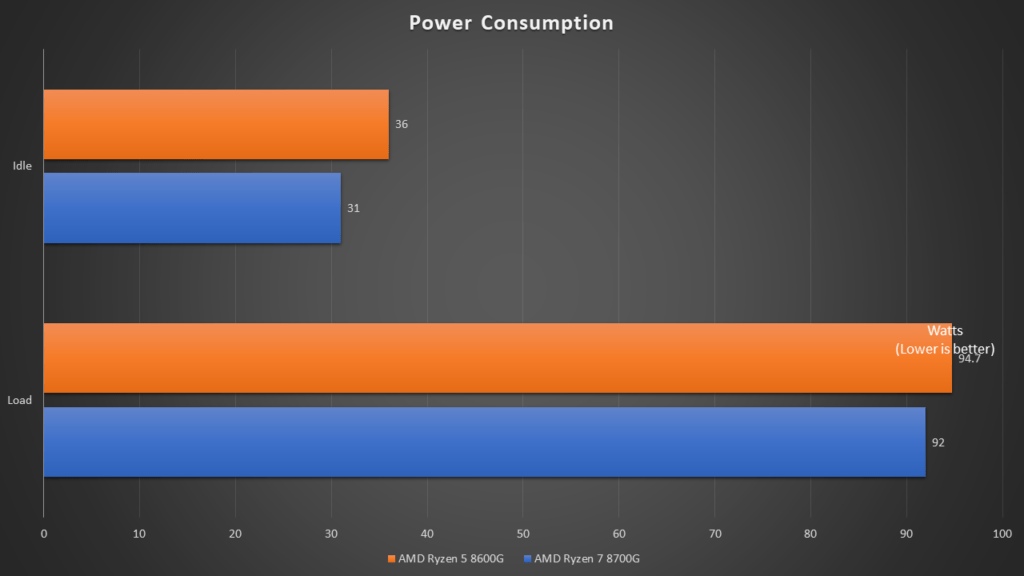Accelerated Processing Units, or APUs for short, has been an ambition of AMD since the early days when heterogenous computing was first introduced. Believing that by introducing both CPU and GPU compute capabilities onto a single desktop processor, mainstream users will be able to enjoy decent computing experiences regardless of the types of usage. Thus, AMD has spent many years perfecting the trade. While we have seen them making strides in recent years, especially since the introduction of the Zen and RDNA strategy, the best has yet to come.
AMD Ryzen 8000G Series Processors
 Today, AMD has just released their latest Ryzen 8000G Series Processors, which showcases their latest technologies into a single desktop processor. With the latest “Zen 4” microarchitecture, AMD has improved its design which allowed improved IPC (instructions per clock) and higher core frequencies. Furthermore, it also features the AMD Radeon 700M graphics compute units, which leverages on the RDNA 3 graphics technology, to provide improved graphics compute and gaming capabilities. It even features dedicated AI Engine for accelerated AI inference compute capabilities. What’s interesting is that AMD has migrated the Ryzen 8000G series processors’ Zen 4 CCDs from 5nm node to the 4nm node, promising even more efficiency.
Today, AMD has just released their latest Ryzen 8000G Series Processors, which showcases their latest technologies into a single desktop processor. With the latest “Zen 4” microarchitecture, AMD has improved its design which allowed improved IPC (instructions per clock) and higher core frequencies. Furthermore, it also features the AMD Radeon 700M graphics compute units, which leverages on the RDNA 3 graphics technology, to provide improved graphics compute and gaming capabilities. It even features dedicated AI Engine for accelerated AI inference compute capabilities. What’s interesting is that AMD has migrated the Ryzen 8000G series processors’ Zen 4 CCDs from 5nm node to the 4nm node, promising even more efficiency.
Certainly, the AMD Ryzen 8000G Series sits at the top of consumer desktop heterogenous computing. With the release, AMD has introduced 4 new products as part of the series.
| AMD Ryzen 7 8700G | AMD Ryzen 5 8600G | AMD Ryzen 5 8500G | AMD Ryzen 3 8300G | |
| Boost/Base Frequency | 5.1/4.2 GHz | 5.0/4.3GHz | 5.0/3.5GHz | 4.9/3.4 GHz |
| Cores/Threads | 8/16 | 6/12 | 6/12 | 4/8 |
| GPU Model / CUs/ Max Boost | Radeon 780M 12CUs 2.9GHz |
Radeon 760M 8CUs 2.8GHz |
Radeon 740M 4CUs 2.8GHz |
Radeon 740M 4CUs 2.6GHz |
| Ryzen AI NPU | XDNA @ 1.6GHz | XDNA @ 1.6GHz | N/A | N/A |
| Total Cache (L2+L3) | 24MB | 22MB | 22MB | 12MB |
| TDP | 65W | 65W | 65W | 65W |
| Process Microarchitecture | 4nm Zen 4 | 4nm Zen 4 | 4nm 2 x Zen4, 4 x Zen4c | 4nm 1 x Zen4, 3 x Zen4c |
| Zen4c Max/Base Clocks | NA | NA | 3.7GHz / 3.2GHz | 3.6GHz/ 3.2GHz |
| Boxed Cooler Included | AMD Wraith Spire | AMD Wraith Stealth | AMD Wraith Stealth | N/A |
| PCIe Gen/ Total Lanes/ Graphics Lanes | Gen 4 20/8 |
Gen 4 20/8 |
Gen 4 14/4 |
Gen 4 14/4 |
| SEP | 329USD | 229USD | 176USD | N/A |
We’ve got our hands on the AMD Ryzen 7 8700G with Radeon 780M and Ryzen 5 8600G with Radeon 760M. It will be exciting to see how these processors perform in our compute and gaming tests. Certainly, we will want to find out if these new processors will be good enough for most of our usage.
Test Setup and Testing Methodologies
| CPU | AMD Ryzen 7 8700G | AMD Ryzen 5 8600G |
| RAM | GSkill Trident Z5 Neo RGB DDR5-6400 CL32-39-39-102 |
GSkill Trident Z5 Neo RGB DDR5-6400 CL32-39-39-102 |
| Main Storage | Kingston NV1 1TB | SK Hynix P41 1TB |
| GPU | N/A | N/A |
| Motherboard | Gigabyte B650 AORUS Elite AX ICE | ASUS ROG STRIX B650-A Gaming WiFi |
| CPU Cooler | AMD Wraith Spire | AMD Wraith Stealth |
| PSU | XPG Core Reator 850 Gold | FSP Hydro |
| OS | Windows 11 Pro 64 bit | Windows 11 Pro 64 bit |
All benchmark tests are completed at their default settings. Games are set to Low preset on 1080p resolution, when the settings are available.
Performance Results
Power Consumption and Temperatures
The power consumption and temperature tests were done with Cinebench R23 benchmark. The idle records where taken when a restart of the system was completed and system temperature and power consumption stabilized.
The above load power consumptions and temperatures were reached when the Cinebench R23 benchmark was executed. However, what’s not listed is that the AMD Ryzen 8 8700G, under prolonged Cinebench R23 benchmark, had limited is performance to sustain both power and temperatures, even though it was not recorded as being throttled as it is still running above its base clock. The temperature on load was then stabilized at 70 degree celsius.
Conclusion
It’s interesting to see how much performance the AMD Ryzen 8000G series can produce now. Compared to the past, where many trade-offs have to be made to incorporate both the CPU and GPU components within a single CPU, the AMD Ryzen 8000G series pushes the limits and shows what it is truly capable of.
In terms of daily compute and productivity tasks, the AMD Ryzen 7 8700G and Ryzen 5 8600G both performed very well. It is more than capable of dealing of your day to day compute requirements, be it for work or entertainment. When it comes to games, with the graphics demanding titles which we have tested both products with, we still see that the APU still has its limitation. It will run games which are less graphics intensive, but it’s still far to be a decent offering for AAA titles. Thankfully, you still can upgrade the system with a dedicated graphics card if required in the future.
What’s interesting to note is how software implementations, particularly the AMD FidelityFX features can enhance gameplay experiences. It’s like a free upgrade to the PC. In our tests, with FidelityFX FSR turned on, despite our settings set to low, the graphics doesn’t look as bad as we would expect. Moreover, with FidelityFX FSR 3 Frame Generation, we did get a significant boost to FPS, resulting in a much smoother gameplay experience.
In conclusion, we can see how the AMD Ryzen 8000G series is starting to bridge the gap between CPU and GPU performance on a APU product. If you would to need a system for less graphics demanding games, or simply just for work, both the Ryzen 7 8700G and Ryzen 5 8600G are excellent choices. However, if what you’re looking out for is to play AAA titles, then you’d be better off pairing your system with a dedicated GPU. Regardless, we do see how AMD is introducing improvements in both hardware and software to bring that expected experience to a single APU product.
That keeps us excited for the next generation APU offering from AMD.























